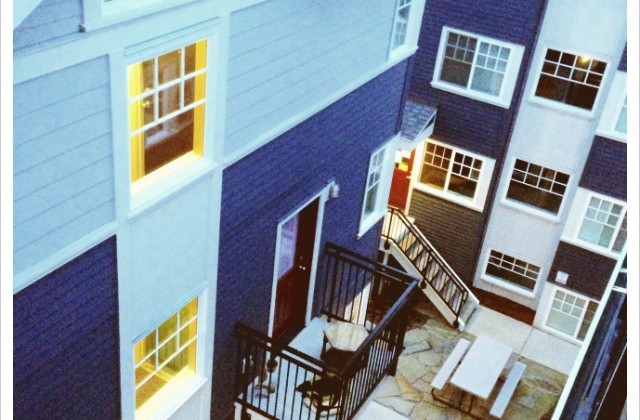DPD Recommendations on Microhousing: Why Subject a Good Thing to a Bad Process?
What follows is the text of a letter sent by Smart Growth Seattle last week in response to the Department of Planning and Development’s recommendations to the City Council on microhousing.
The Planning, Land Use, and Sustainability Committee will soon be considering legislation that would affect future microhousing developments; that legislation is likely to be based, in part, on recommendations by the Department of Planning and Development (DPD). Smart Growth Seattle intends to stay actively engaged in the legislative process in the coming months.
The evidence is overwhelming: microhousing safely and efficiently meets a critical housing need in the city. Furthermore, microhousing is a healthy and affordable housing choice for the many people of all ages who want to live in the city and prefer less space. We need to keep this housing choice available and affordable.
However, the recommendations forwarded to you by DPD—especially the suggestion to require design review—will not substantively address the worries of neighbors and will simply add additional cost to projects which will lead to higher rents, harming the biggest benefit of microhousing—its affordable price. Why subject a good thing–microhousing–to a bad process?
What follow is our detailed responses to DPD’s recommendations. The DPD recommendations are in bold followed by our response.
Define “Micro Dwelling Unit” as a subset of “Dwelling Unit” in the Land Use Code
Smart Growth Seattle supports the definition proposed by DPD with the exception of requiring a maximum size for micro dwelling unit. If the concern is that larger size will encourage more than one resident, the 8 person limit would prevent that.
If the concern is that some developers might be trying to create smaller apartments without full kitchens, we don’t see any reason to limit this if owners can fill units that are larger than 285 square feet and otherwise fit the micro dwelling unit definition proposed. Customers in search of housing should have every choice open to them and builders should be able to be innovative in responding to their choices.
Design Review. Apply Threshold for Micro Dwelling Units and Congregate Residences by Building Size
We appreciate DPD developing a threshold for design review that is based on building size not number of units. Building size is what is visible to the neighborhood, not individual units, and the size threshold is consistent with principle behind SEPA thresholds.
However, there is almost universal sentiment—not just among developers but residents, as well—that the current system of design review—including so-called Streamline Design Review—is broken. The process is open-ended, too costly, and has no impact on the concerns surfaced by neighbors. Design review has no effect on parking, for example.
Even City staff made the observation that after going through the design review process “projects showed little evidence of substantial modification” (see page 3 of the recent report written by DPD at http://clerk.seattle.gov/~public/meetingrecords/2013/plus20130628_4b.pdf).
We believe that before microhousing projects are subjected to this expensive, time consuming, and ineffective process it should be fixed so that design review becomes a useful, predictable, and more affordable process for all projects in the city. And if notice is an important issue to microhousing opponents, we think a mailed notification to residents within 800 feet of a project during permitting would make more sense than requiring design review.
SEPA Thresholds and Growth Targets
We agree with the DPDs proposals on SEPA thresholds for microhousing. We are concerned, however, that in areas that have reached their growth targets, microhousing and all other housing would be exposed to the costs and uncertainties of SEPA review. As we pointed out in our last memo, growth targets should be floors not ceilings for growth.
Prohibit new Micro Dwelling Unit development in single-family zones
We see this as a potential loss of housing supply and choice in Seattle’s single-family neighborhoods. Our view is that if there is demand for microhousing in single-family neighborhoods, it should be allowed.
Adjust refuse collection areas in Micro Dwelling Units and Congregate Residence developments
As we pointed out in our last memo, garbage is an issue in every neighborhood and for every housing type. Educating people and managing how they dispose of their garbage is an ongoing issue in cities of all sizes. However, we feel this proposal is a reasonable one and would allow an evolving solution based on interaction between staff at Seattle Public Utilities, developers, building managers, and customers.
Size minimums for Micro Dwelling Units and Congregate Residences
We agree with DPD that the existing building code and the housing market should set the size of Micro Dwelling Units. Imposing a size requirement is forcing microhousing customers to buy more housing than they want to buy, driving up their monthly housing costs. Customers and developers should be allowed to set the size based on the existing limits, costs, and what customers are able to pay for housing.
Restricted Parking Zone (RPZ): Clarify regulations or rules for Micro Dwelling Units and Congregate Residences
As we have pointed out (and has been reported in the media), microhousing is actually a parking solution, since most residents of microhousing don’t drive and microhousing buildings, because they have fewer qualifying units, actually use fewer RPZ permits. We welcome a closer look at how microhousing supports fewer cars and fewer parking problems in neighborhoods.
We look forward to working with you and DPD staff as you deliberate next steps on microhousing. In the end, we think Council ought to consider how to make building microhousing easier so that it can continue to be choice for people shopping for affordable housing. More process and costs will not help make microhousing more available to the many people who want to live in these homes.


